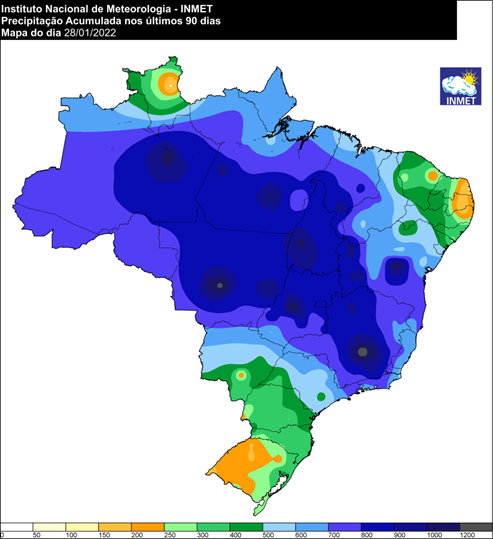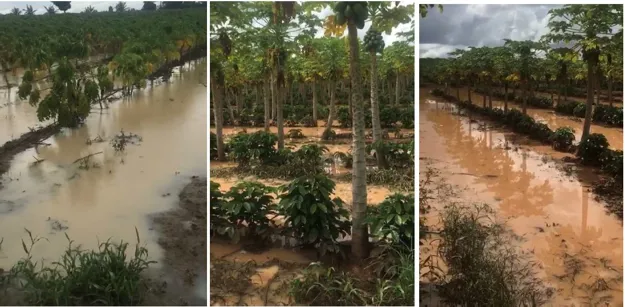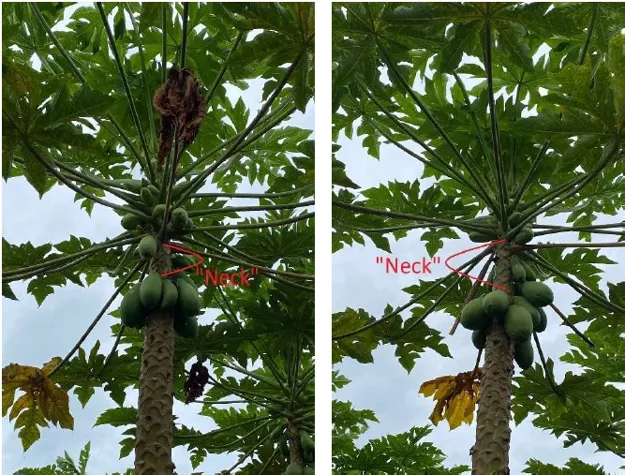Due to the heavy storms and rainfall at the end of last year and the beginning of this year, some of Brazil's main agricultural regions "Espírito Santo" and "Bahia" were under water. An estimated 50,000 people lost their homes. "I cannot remember such a great tragedy in the recent history of Bahia," wrote Governor Rui Costa. The state of Bahia is one of the strongest papaya growing areas in Brazil, with both the Formosa variety and the smaller and sweeter Golden being grown there, a major importer from Germany tells us.
"Many fields were under water for weeks, and many were completely lost. The consequences cannot yet be assessed by the farmers and will only become apparent in the coming months. At the moment, we have to make great efforts on the production side to be able to cover the programs in Europe, which we are still managing well due to our close and trusting supplier relationships. However, the producers cannot make any firm commitments. At the moment, we have to think from week to week and wait to see what volumes are available for the European market."
Rain pattern of the last 90 days
Additionally, there is an emerging trend toward less cultivation in Brazil, despite the rising demand. Papaya prices have been under a lot of pressure for a long time and the European quality requirements are formidable. This makes the papaya business an incalculable risk for both growers and importers.
The import company also had the current period report from a Brazilian exporter specializing in papaya. The results have been made available:
Fruit (production and quality)
Development: First, the second half of October and the whole of November were characterized by an exceptional amount of rain, which is totally untypical for this period. Normally, the rainy season in the region extends from January to March, and this helps to explain the historical scarcity in June, July and August. So the shortage being faced now is also due to the massive rainfall that collapsed four months ago.
The excess of rain causes a high level of plant death and also a considerable reduction in quality, this last point has resulted in a low yield in fruit packing. This means that on average, during the rainy season, only 30% of the harvested fruits can be exported. In addition to the rains in October/November, there was another large amount of rainfall in early January, which further reduced the quality and yield of fruit in the fields and in packaging.

Another important point is the general reduction of papaya acreage in Brazil, which is said to be mainly due to these reasons:
- Rising costs of agricultural inputs and machinery - which led several growers to not plant new papaya fields. Production of papaya in Brazil is expensive and therefore it has become very risky to produce papaya in Brazil
- Lack of availability of agricultural infrastructure - even at high cost, producers require more than 90 days for delivery of pipes and irrigation equipment.
- Price increase of coffee - in the region it is common to grow coffee and papaya together. The increase in coffee beans (the value doubled in the last 12 months) combined with the increasing cost of papaya has led many growers to grow only coffee, without papayas.
- The final point is the fact that although papaya trees produce fruit continuously, there are periods of extremely low yields, locally referred to as the "neck", as there is a gap between the fruit that is ready to harvest and the others that are still in the early stages (see pictures below illustrating this "neck"). At this stage of production, the total volume of a farm decreases by more than 70%.

